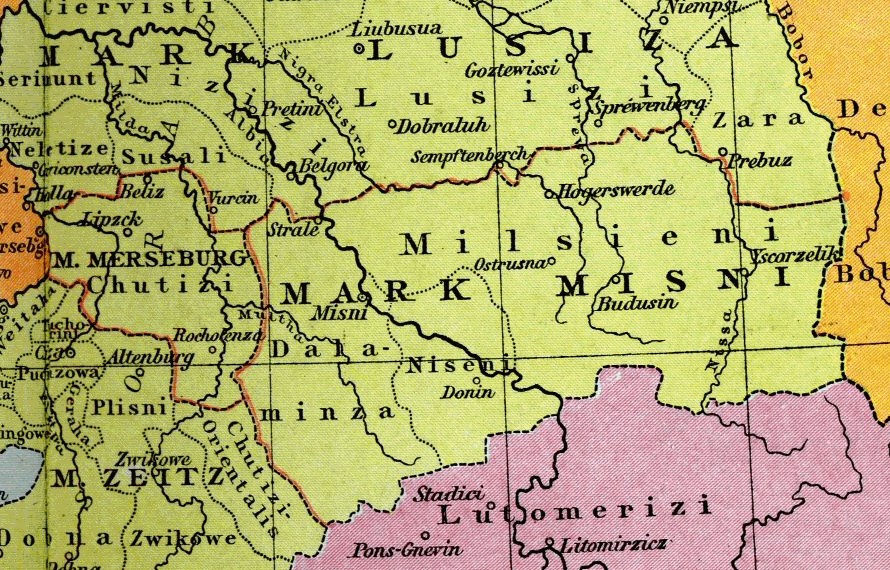|
Duchy Of Jawor-Świdnica
Duchy of Jawor ( pl, Księstwo Jaworskie, german: Herzogtum Jauer) was one of the Duchies of Silesia established in 1274 as a subdivision of the Duchy of Legnica. It was ruled by the Silesian Piasts, with its capital at Jawor in Lower Silesia. Geography The original Duchy stretched from Jawor on the Nysa Szalona River westwards along the northern slopes of the Western Sudetes to the Jizera Mountains and the Kwisa River, which formed the Silesian border with the former Milceni lands of Upper Lusatia. In the north it bordered the remaining Duchy of Legnica and in the east the Duchy of Silesia-Wrocław. It included the towns of Bolków, Kamienna Góra, Lubawka, Lwówek, Świerzawa and (from 1277) Strzegom. History The Silesian Duchy of Legnica since 1248 had been under the rule of Duke Bolesław II Rogatka. When Bolesław's eldest son Henry V the Fat succeeded his father as Duke of Legnica in 1278, he gave the Jawor subdivision to his younger brothers Bolko I the Strict and Berna ... [...More Info...] [...Related Items...] OR: [Wikipedia] [Google] [Baidu] |
Polish Language
Polish (Polish: ''język polski'', , ''polszczyzna'' or simply ''polski'', ) is a West Slavic language of the Lechitic group written in the Latin script. It is spoken primarily in Poland and serves as the native language of the Poles. In addition to being the official language of Poland, it is also used by the Polish diaspora. There are over 50 million Polish speakers around the world. It ranks as the sixth most-spoken among languages of the European Union. Polish is subdivided into regional dialects and maintains strict T–V distinction pronouns, honorifics, and various forms of formalities when addressing individuals. The traditional 32-letter Polish alphabet has nine additions (''ą'', ''ć'', ''ę'', ''ł'', ''ń'', ''ó'', ''ś'', ''ź'', ''ż'') to the letters of the basic 26-letter Latin alphabet, while removing three (x, q, v). Those three letters are at times included in an extended 35-letter alphabet, although they are not used in native words. The traditional ... [...More Info...] [...Related Items...] OR: [Wikipedia] [Google] [Baidu] |
Milceni
The Milceni or Milzeni ( cs, Milčané; german: Milzener; pl, Milczanie) were a West Slavic tribe, who settled in the present-day Upper Lusatia region. They were first mentioned in the middle of the 9th century AD by the Bavarian Geographer, who wrote of 30 ''civitates'' which possibly had fortifications. They were gradually conquered by Germans during the 10th century. Modern descendants of the Milceni are the Sorbs of the Free State of Saxony, Germany.Institut für Sorabistik.About Sorbian Language". Accessed November 8, 2006. History The Milceni travelled to Upper Lusatia in the 7th century during the Migration Period.''Bautzen.de''History. Accessed November 8, 2006. The exact borders of their settlement area are disputed. It is generally accepted that their fielded land had fruitful loess soil and had dimensions of approximately 50 km from east to west and 20 km from north to south. The northern border was in swampy and partially infertile terrain, while the south ... [...More Info...] [...Related Items...] OR: [Wikipedia] [Google] [Baidu] |
Silesia 1294-1296
Silesia (, also , ) is a historical region of Central Europe that lies mostly within Poland, with small parts in the Czech Republic and Germany. Its area is approximately , and the population is estimated at around 8,000,000. Silesia is split into two main subregions, Lower Silesia in the west and Upper Silesia in the east. Silesia has a diverse culture, including architecture, costumes, cuisine, traditions, and the Silesian language (minority in Upper Silesia). Silesia is along the Oder River, with the Sudeten Mountains extending across the southern border. The region contains many historical landmarks and UNESCO World Heritage Sites. It is also rich in mineral and natural resources, and includes several important industrial areas. The largest city and Lower Silesia's capital is Wrocław; the historic capital of Upper Silesia is Opole. The biggest metropolitan area is the Upper Silesian metropolitan area, the centre of which is Katowice. Parts of the Czech city of Ostrava and ... [...More Info...] [...Related Items...] OR: [Wikipedia] [Google] [Baidu] |
